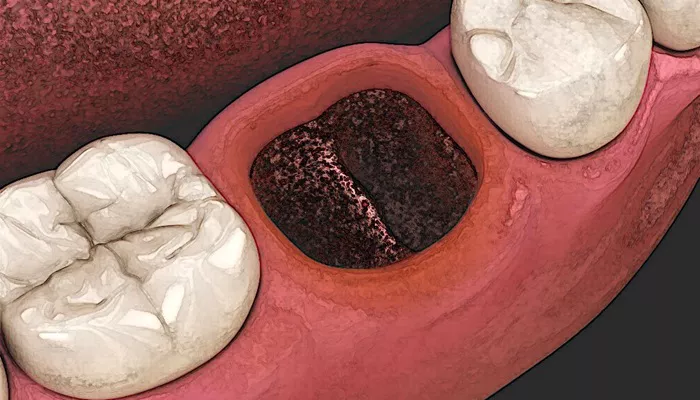The extraction of wisdom teeth is a common dental procedure, often necessary due to issues like impaction, crowding, or infection. One of the primary concerns for patients undergoing this procedure is the healing process, particularly regarding how long it takes for the holes left by the extracted wisdom teeth to close. Understanding this process can alleviate concerns and guide patients through their recovery with more confidence. In this comprehensive article, we’ll explore the timeline and factors influencing the closure of extraction sites, ensuring you are well-informed about what to expect.
The Healing Process of Wisdom Teeth Extraction
1. Immediate Post-Extraction Period
Right after the extraction of wisdom teeth, the body initiates a natural healing process. The initial phase involves the formation of a blood clot at the extraction site, which is crucial for the healing process. This clot acts as a protective barrier and aids in the regeneration of the bone and soft tissue.
During the first 24 to 48 hours, patients are advised to avoid disturbing the extraction site. This means no vigorous rinsing, sucking through straws, or eating hard foods that could dislodge the blood clot. Adhering to these guidelines helps prevent complications such as dry socket, a painful condition where the blood clot becomes dislodged.
2. The Role of Bone and Soft Tissue Healing
After the initial clot formation, the body begins to replace the clot with granulation tissue. This tissue is a type of connective tissue that fills the wound and supports new blood vessel growth. Over the next few weeks, this tissue matures and becomes more fibrous, gradually forming the new tissue that will eventually cover the extraction site.
Bone healing occurs in tandem with soft tissue healing. The bone around the extraction site undergoes a process called “osseous regeneration,” where new bone tissue forms to replace the lost bone. This process can take several months, and during this time, the hole left by the extraction begins to fill in.
SEE ALSO: What to Eat on Third Day of Wisdom Teeth
3. When Do The Holes Close Wisdom Teeth
While individual healing times can vary, there are general timelines that can help set expectations for most patients:
First Week: During the first week, significant changes occur. The initial discomfort usually subsides, and the gum starts to close over the extraction site. However, the bone healing process is just beginning.
Two to Four Weeks: By the end of the first month, the gum tissue typically starts to look more healed, and the swelling should have significantly reduced. The site will still be sensitive, and the bone underneath continues to regenerate.
Three to Six Months: The hole where the wisdom tooth was extracted will continue to fill in with new bone and soft tissue. By the end of this period, the site should be mostly closed, though some residual healing may still be taking place.
Six to Twelve Months: Complete bone regeneration and maturation usually occur within six to twelve months. During this time, the bone may continue to remodel and strengthen, ensuring that the extraction site is fully integrated with the surrounding bone.
Factors Affecting The Healing Process
Several factors can influence how quickly and effectively the extraction site heals:
Age: Younger individuals often heal faster than older adults due to better regenerative capacities. However, age alone does not dictate healing speed, as other factors also play a role.
Overall Health: Individuals with chronic health conditions, such as diabetes or autoimmune disorders, may experience slower healing. Good overall health and nutrition can support faster recovery.
Oral Hygiene: Maintaining excellent oral hygiene is crucial to prevent infections and promote healing. Patients should follow their dentist’s instructions for cleaning the extraction site and avoiding harmful practices.
Smoking and Alcohol Consumption: Smoking and excessive alcohol consumption can hinder the healing process.
Nicotine restricts blood flow and delays tissue regeneration, while alcohol can interfere with the healing process and increase the risk of infection.
Complexity of Extraction: The complexity of the extraction, such as whether the tooth was impacted or required surgical removal, can affect healing times. More complex extractions may require longer periods for complete closure.
Managing Post-Extraction Care
Proper care after the extraction is vital for ensuring optimal healing. Here are some key tips for managing the recovery process:
Follow Post-Operative Instructions: Adhere to the dentist’s or oral surgeon’s post-operative care instructions, including how to care for the extraction site, when to take prescribed medications, and what foods to avoid.
Use Ice Packs: Applying ice packs to the outside of the face near the extraction site can help reduce swelling and discomfort during the first 24 hours.
Maintain a Soft Diet: Stick to a soft diet for the first few days to avoid irritating the extraction site. Foods like yogurt, applesauce, and mashed potatoes are good choices.
Avoid Dislodging the Clot: Be cautious with oral activities that might disturb the blood clot, such as brushing too vigorously or using straws.
Complications to Watch For
While most extractions heal without issue, there are potential complications that patients should be aware of:
Dry Socket: This occurs when the blood clot at the extraction site is dislodged or dissolves prematurely. It can lead to intense pain and requires treatment by a dental professional.
Infection: Signs of infection include increased pain, swelling, and discharge from the extraction site. Prompt treatment is necessary to manage infections effectively.
Delayed Healing: In some cases, healing may take longer than usual. This can be due to various factors, including underlying health conditions or complications from the extraction.
Conclusion
The healing process after wisdom teeth extraction involves several stages, from the initial clot formation to complete bone regeneration. While the timeline for closure can vary, understanding the typical healing phases and factors that influence recovery can help set realistic expectations and promote a smoother recovery. By following post-operative care instructions and maintaining good oral hygiene, patients can support their body’s natural healing processes and achieve optimal results.

